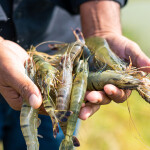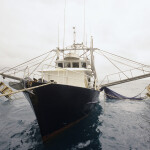Maryland state officials discovered around 24,000 dead menhaden in the harbor of the city of Baltimore on 4 September.
Menhaden, or pogies, are a vital species in the Chesapeake Bay ecosystem. The incident is a reminder of the severe environmental challenges the local waterways face, driven by seasonal temperature changes, pollution, and nutrient overloads, according to the Chesapeake Bay Foundation, a nonprofit seeking to improve environmental conditions in the bay.
Chesapeake Bay Foundation educators first observed a dense algal bloom with a sulfur-like smell altering the water’s color on 3 September. By the following day, the harbor was filled with floating dead menhaden. This large-scale die-off follows a smaller fish kill in late August, which involved about 1,700 fish, according to the foundation.
The fish kill was primarily caused by thermal inversion, where cooler, denser water sinks to the bottom, causing warmer water and sulfur bacteria to rise. These bacteria consume oxygen rather than produce it, creating harmful conditions for fish, the foundation said.
Blue crab fishermen in the bay have voiced frustration over insufficient wastewater treatment impacting their catch. Chesapeake Bay Foundation Maryland Staff Scientist Gussie Maguire said the situation has been worsened by algae flourishing on nutrient-rich stormwater runoff and warming waters caused by climate change.
“It's crucial that we limit further stressors on our beloved aquatic species,” Maguire said. “Menhaden are the bedrock of the bay ecosystem, supporting many other species’ diets. They already face immense pressure from industrial fishing lower in the Chesapeake Bay. Reducing nutrient pollution from stormwater runoff in Maryland would help expand the habitat for these critically important fish. The Bay’s menhaden are now pinched between industrial fishing and dead zones.”
A recent report from the U.S. Environmental Protection Agency found Maryland has not addressed stormwater runoff pollution, which undermines overall bay health and raises the risk of further fish kills, according to the foundation. Despite some improvements in water quality metrics, Maryland’s failure to adequately conduct stormwater management means pollution continues to degrade the waterway, and a rise in coastal development and climate change have compounded these problems, impacting both wildlife and commercial fisheries, Maguire said.








